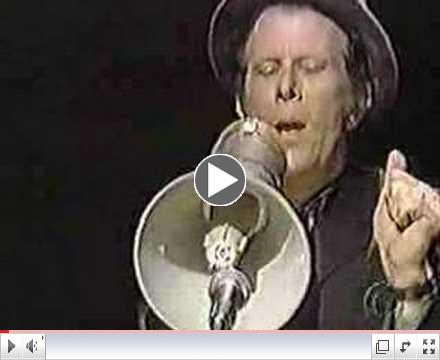 | |
Tom Waits,
Last Beatnik Bluesman,
Does 'Chocolate Jesus'
|
|

New CCDS Book Reporting on Vietnam
|
 The new annual edition of our journal of discussion and analysis is now out. More than 170 pages, it includes 14 articles on strategy austerity, organizing, and the right. Cost is $10 plus shipping. Or get one by becoming a sustainer. Click the title to buy it directly. The new annual edition of our journal of discussion and analysis is now out. More than 170 pages, it includes 14 articles on strategy austerity, organizing, and the right. Cost is $10 plus shipping. Or get one by becoming a sustainer. Click the title to buy it directly.
|
|
Radical Jesus:
A Graphic History of Faith 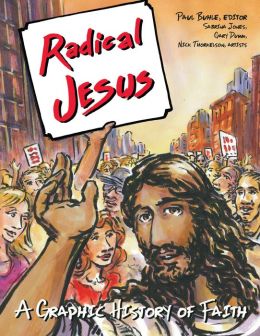 By Paul BuhleHerald Press By Paul BuhleHerald Press
|

Want to Know what CCDS has
been doing...Check it Out!
|
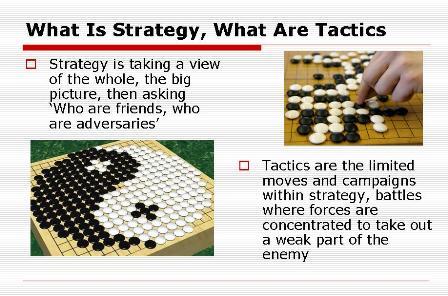 Keep On Keepin' On Keep On Keepin' OnHating the 'Middle Class,' Why Socialists Run in Elections, Strategy and Tactics Slide Slow, Class and Privilege, the Green New Deal ...and other Short Posts on Tumblr by Carl Davidson
|

Edited by Carl Davidson Revolutionary Youth and the New Working Class: The Praxis Papers, the Port Authority Statement, the RYM Documents and other Lost Writings of SDS Changemaker, 273pp, $22.50
For the full contents, click the link and view 'Preview' under the cover graphic.
|
|
By Randy Shannon, CCDS

"Everyone has the right to work, to free of employment, to just and favorable conditions of work and to protection against unemployment."
- United Nations Universal Declaration of Human Rights, December 10, 1948
I. Introduction
The "Great Recession" that began in 2007 has caused the greatest percent of job losses since the Great Depression of 1929. This crisis is the end of an era of unrestrained 'neo-liberal' capitalism that became public policy during the Reagan administration. The crisis marks a new level of instability with the growth of a global financial elite that targeted US workers and our trade unions after World War II.
|
|
Order Our
Full Employment Booklets
 |
...In a new and updated 2nd Edition
Capitalism may well collapse under its own excesses, but what would one propose to replace it? Margaret Thatcher's mantra was TINA...There Is No Alternative. David Schweickart's vision of "Economic Democracy" proposes a serious alternative. Even more fundamentally, it opens the door to thinking about alternatives. His may or may not turn out to be the definitive "successor system," but he is a leader in breaking out of the box. |
 by Paul KrehbielAutumn Leaf Press, $25.64
by Paul KrehbielAutumn Leaf Press, $25.64 | | Shades of Justice Video: Bringing Down a President, Ending a War |
|
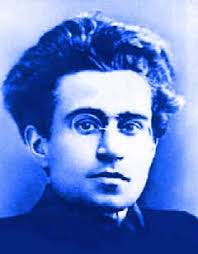 By Giuseppe Fiori
Verso, 30 pages
|

Essays on Mondragon, Marx, Gramsci
and the Green and Solidarity Economies |

- Foreword by Susan Brownmiller
- Preface by Ken Wachsberger
$37.50 + $6 shipping
|
|
Discussion Documents for a Militant Movement
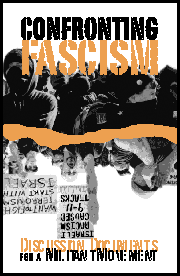
By Don Hamerquist
|
|
|
|
An Invitation to CCDSers and Friends...
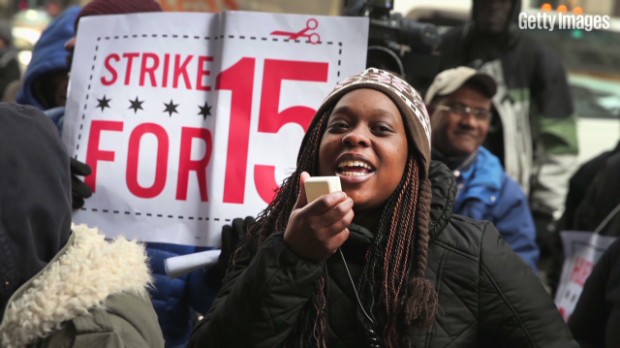 Low Wage Low Wage
Workers Take
On Fast Food
with National Strike
We're the Committees of Correspondence for Democracy and Socialism...Do you have friends who should see this? Pass it on...Do you have a blog of your own? Others you love to read every day? Well, this is a place where you can share access to them with the rest of your comrades. Just pick your greatest hits for the week and send them to us at carld717@gmail.com! Most of all, it's urgent that you support low-wage workers, oppose militarized police, the war on Gaza, defend voter rights, plan for 2014 races now, oppose austerity, support the 'Moral Mondays' in North Carolina, the fight for the Green New Deal, a just immigration policy and the Congressional Progressive Caucus' 'Back to Work Budget'! We're doing more than ever, and have big plans. So pay your dues, make a donation and become a sustainer. Do it Now! Check the link at the bottom... |
'$15 Could Change Everything': 100s Arrested
As Fast-Food Workers Strike Nationwide

Fast Food Strikers in Times Square. Photo by Pat Fry
By Jillian Berman
Huffington Post
Sept 4, 2014 CHARLESTON, S.C. -- About two dozen of this city's fast-food workers marched Thursday afternoon to a street corner that's home to a McDonald's, a Wendy's and a KFC. Calling for a living wage of $15, they seated themselves in the middle of a freeway entrance, backing up traffic as far as the eye could see.
Charleston police were eventually forced to pull them out of the street one by one, citing them for disorderly conduct in what were deemed "non-custodial" arrests. All told, 18 people -- most of them earning right around minimum wage -- were arrested next to the McDonald's parking lot.
"I'm just tired of seeing my family struggle," Robert Brown, a 20-year-old with short dreadlocks sprouting from his McDonald's visor, said right after a cop handed him a citation ordering him to appear in court. "I can't help them at all with what I make."
The Charleston arrests were part of Thursday's nationwide protest coordinated by Fight for $15, a union-backed campaign in which workers are demanding a $15 wage and union recognition. With the support of local labor and community groups, workers have been taking part in a series of intermittent one-day strikes in various cities over the past two years, shaming big fast-food companies like McDonald's over low pay and irregular hours.
Organizers billed Thursday's strikes and protests as an escalation of the campaign through civil disobedience. Notably, the demonstrations have spread well beyond big cities like New York and Chicago, where they were originally based. On Thursday, workers took to the streets in places like Durham, North Carolina; Tucson, Arizona; and Rochester, New York, according to news reports.
A Fight for $15 spokesperson said that roughly 500 people had been arrested in the demonstrations as of Thursday afternoon, though a portion of those appeared to be citations without arrest.
In instances that HuffPost could confirm, police arrested 47 people in Kansas City, Missouri; 27 in West Milwaukee, Wisconsin; 19 in New York City's Times Square; 30 in Detroit; 11 in San Diego; 8 in Wilkinsburg, Pennsylvania; seven in Miami; and three in Denver. Police also confirmed 19 citations in Chicago; 10 in Indianapolis; 13 in Hartford, Connecticut; and 10 in Las Vegas. In most cases, the arrests and citations came after protesters were blocking traffic.
The high-profile strikes -- which tend to draw national news coverage when they happen -- have helped progressive legislators push through minimum wage hikes on the state and local level in recent months, including a $15 wage floor that will slowly go into effect in Seattle. Even President Barack Obama has held up the protests as evidence that Congress needs to hike the federal minimum wage, which hasn't been raised since 2009. The current level of $7.25 is less than half of what the Fight for $15 campaign is calling for....(Click title for more)
|
|

Jamaad Reed in Cincinnati.
By Krissy Clark
Marketplace.org
Sept 1, 2014 - When Jamaad Reed started his job as a cashier at a Wal-Mart near Cincinnati, he made $8.15 an hour. That was two years ago. Since then, he has seen a couple of raises, which have meant his wage has kept up with inflation - but just barely. As of March of this year, Reed was making $9.05 an hour.
"I'm stuck," he said recently. "You know what I'm saying? I feel like I'm stuck in the same spot."
"Stuck" is a pretty good word to describe wages for most American workers over the last few decades. Not just in the case of lower-wage workers like Reed, but along most of the income spectrum, except for those at the very, very top.
In fact, most American workers have seen little to no growth since the late 1970s, if you adjust for inflation, according to Elise Gould. She's an economist with the Economic Policy Institute and author of a new study that analyzes wage data from census surveys over the last several decades.
That's not to say that individual workers haven't seen gains. But, says Gould, "as productivity has continued to rise, typical workers' wages simply have not."
That's a very different economic picture from a half-century ago. In the first few decades after World War II, as the nation's productivity grew, so did wages. So what happened?
"This is one of the questions that people are arguing about right now," says Linda Barrington, the executive director of the Institute of Compensation Studies at Cornell University.
Barrington says some economists point to a loss of worker bargaining power, meaning workers are less able to claim growing productivity gains in the way they could when labor unions were stronger.
Others blame a shift in business strategy over the years to one that focuses more on shareholder returns, "as opposed to sharing the returns and the gains to all of the employee base," says Barrington.
Meanwhile, technological advances and globalization have meant there are fewer middle-wage jobs to be had in the U.S. Now, workers who in a previous era might have had relatively well-paying manufacturing or clerical jobs have to settle for lower-paying jobs in the service sector instead.
Even as economists debate the reasons behind American workers' stagnating wages, one thing is certain. They don't just affect individual wallets, but the economy as a whole....(Click title for more)
|
By Jeffrey Nall
Truthout via Portside
Sept 1, 2014 - As fast-food workers demand a fair share of the profits they create, the industry, its supporters and assorted critics of the movement have responded by lobbing red herrings, from the contention that workers should find new work if they don't like their current working conditions to the threat that "robots will replace you."
Others charge that workers don't deserve a living wage because their job doesn't require a college education. A Facebook meme [1] posted by Sarah Palin in response to last fall's Fight for 15 protests pictures US soldiers in combat, accompanied by the text: "We get paid less than minimum wage and you're demanding 15 bucks an hour to slap a burger on a bun." These common appeals are part of a tapestry of "plutocratic fallacies" used to justify exploitive wages and foster irrational division among low-wage workers.
"Exploitation, Not Lovin' It." These are the words of a popular sign at protests that satirizes McDonald's "I'm Lovin' It" slogan. In a society where the vocabulary of ethics, justice and the public good are marginalized and maligned, terms like "exploitation" should be defined: Exploitation is the imbalanced and unfair transfer of the value of one group's labor to another group. Philosopher Iris Marion Young writes that exploitation occurs when "the energies of the have-nots are continuously expended to maintain and augment the power, status, and wealth of the haves."(1) [2]
Exploitation is wrong because it is a form of injustice. Young's vision of the just society is one that ensures members of society are able to 1) develop themselves - flourish, and 2) play a meaningful role in determining the rules and order of society - political autonomy.(2) [3] Oppression is the opposite of experiencing justice. To say a person is experiencing oppression is to say "their ability to develop and exercise their capacities and express their needs, thoughts, and feelings" is being unjustifiably inhibited.(3) [4]
Exploitation is perhaps nowhere clearer than in the stark contrast between CEO pay and average employee pay. Average CEO pay is 185 times [5] that of the average American worker's pay. The gap is even larger among the CEOs at top American companies. A 2011 study done byEquilar, an executive compensation data firm, found that median pay for CEOs at 200 large US companies averaged $10.8 million in 2010. The Economic Policy Institute's June 2014 report [6] found that the average US CEO earned $15.2 million in 2013, an amount 296 times greater than that of the typical American worker. To put this into perspective, EPI notes that the CEO-to-worker pay ratio was 20-to-1 in 1965. Between 1978 and 2013, compensation adjusted for inflation has increased by 937 percent for CEOs and 10.2 percent for the typical worker. ...(Click title for more)
|
By Paul Blumenthal
Huffington Post
WASHINGTON -- If 2012 was the super PAC election, the 2014 midterms look to be the dark money election. Spending on ads that named federal candidates by nonprofit organizations, which are not required to disclose their donors, has soared in the months leading up to November.
Dark money groups have spent at least $142 million on advertising campaigns naming specific senators, representatives and congressional candidates over the past 20 months, according to a Huffington Post analysis of news reports, press releases and political advertising reports collected by the Sunlight Foundation. This total now surpasses the $122 million spent by independent groups that do disclose their donors and only stands to grow.
The major source of this undisclosed money is no surprise -- the political network run by billionaire oligarchs Charles and David Koch. Their network raised and distributed $400 million in the 2012 elections. This time around, the six groups at the center of the Koch operation have already combined to spend at least $53.5 million just on candidate-specific ads.
Nearly all of the spending by Koch groups has come in the form of so-called issue advocacy. Buying issue ads, which level attacks on candidates while stopping short of calling for their electoral victory or defeat, is a useful loophole for nonprofit groups that must abide by tax laws restricting the time and money they can spend on elections. Further, none of this spending is required to be disclosed publicly to the Federal Election Commission.
Despite this legal maneuvering, it's clear that the groups spending big on issue advocacy are directing their efforts toward electoral outcomes. In a recording of a June 16 conference hosted by the Koch-funded Freedom Partners Chamber of Commerce, which was obtained by The Undercurrent and provided to HuffPost, a top Koch network official explained to donors how issue ads help decrease the popularity of its targets.
Freedom Partners President Marc Short told the crowd of wealthy donors how issue advocacy directed at Sen. Kay Hagan (D-N.C.), on which the Koch network has so far spent $13 million, had worked out as of mid-summer.
"After several months of ads that you helped to fund to remind citizens about her record in support of big spending and support of Obamacare, her disapproval rating climbed from 34 percent to where it stands today at 54 percent," said Short in June. "Now, that's not a good place for her to be running for re-election as an incumbent."...(Click title for more)
|
|
Kurdish fighters after liberating Maxmur.
By Dave Holmes
Links
September 2, 2014 - Links International Journal of Socialist Renewal -- Across northern Syria and Iraq, Kurdish forces are locked in fierce battles with the murderous "Islamic State" (IS) armed force. Whether directly or indirectly, the whole Kurdish people is being drawn into this struggle.
In late August the Syrian Kurdish resistance forces announced they had defeated an IS push around the town of Jazaa in north-eastern Syria, close to the Iraq border. Hundreds of IS fighters were killed in the August 19-31 battles.
The IS attempted to cut off the YPG-YPJ (People's Defence Units-Women's Defence Units - the military arm of Rojava, the Kurdish liberated area in northern Syria) from their forces over the border in Shengal (Arabic name: Sinjar). The IS wants to establish a corridor linking Mosul and its possessions in Iraq with Al-Raqqa, its main stronghold in Syria.
The YPG-YPJ intervened in Iraq in early August in order to save the Kurdish Yezidi community in Shengal. The Yezidis were threatened with extermination by the IS, which regards them as "devil worshippers". Although many thousands perished and thousands of women were kidnapped, an escape corridor was established through which 200,000 refugees were evacuated to Rojava.
In western Syria, the city of Aleppo and its surrounds is menaced both by the forces of the Bashir Assad regime and those of the IS. Along with all rebel-held parts of the city, the Kurdish-controlled area is under great pressure. On August 22, the YPG and the Free Syrian Army concluded an agreement for a coordinated fight against these threats. As a condition of this pact, the YPG insisted that the reality of the liberated Rojava cantons be recognised.
Iraq: PKK forces joins struggle
In Iraq, it appears that the peshmerga fighters from the Federal Kurdistan Region have made some progress against the IS thugs. While they have been bolstered by US airstrikes, in a number of instances far more decisive has been the involvement of the experienced, disciplined, highly motivated forces of the Kurdistan Workers Party (PKK), which have been battling the government of Turkey for decades.
From its camps in northern Kurdistan, the PKK sent units of the Peoples Defence Forces (HPG) and YJA STAR (Women's Defence Forces) to join the battle around the Maxmur (or Makhmour) refugee camp 40 kilometres south of Hewler (Erbil), the seat of the Kurdistan Regional Government (KRG). The camp was liberated on August 10 after four days of heavy fighting....(Click title for more)
|

The convergence of solar PV, storage batteries, and electric vehicles to revolutionize industries
By HoundDogFollow for SciTech
SolidarityEconomy.net via Daily KOS
Sept 2, 2914 - Peter Diamandis of Forbes calls up his friends Ray Kurzweil and Elon Musk to bring us some astonishing visions of the future of the solar photovoltaic, solar storage, and electric vehicle industries and how they are converging, which he reports in Solar Energy Revolution: A Massive Opportunity. Their view and the remarkable background data he presents overshadow his "Six D's" analysis which seems somewhat trite compared to his blockbuster opening paragraphs. Here are the best parts.
My friend Ray Kurzweil projects the U.S. will meet 100 percent of its electrical energy needs from solar in 20 years. Elon Musk is a bit more conservative, pegging it at 50 percent in that timeframe. While the growth of solar may seem slow to some, it's fair to say it's in the midst of its "deceptive phase," on the road to disruption. For example, a 30 percent increase in solar energy production per year, means 1 percent today grows to 1.3 percent in 3 years. It also means that in 20 years (7 doublings), we'll see a 128-fold increase. Either way, if Ray and Elon are even close, there is a trillion dollars up for grabs (as well as the future of our planet), and the future is bright. Let's take a closer look at the converging technologies driving this future... The cost of solar panels is dropping exponentially. The first and most important technological change is the falling cost per watt of silicon photovoltaic cells over the past few decades. Check out the plummeting cost from $76 in 1977, to less than $0.36 today.

attribution: None Specified
The International Energy Agency predicts that we will produce 662 GigaWatts of solar energy by 2035 following a $1.3 trillion investment in this area, but frankly this estimate is "highly conservative." The second technology at play is satellite-Earth imaging, which enables companies like solar City to make rapid and accurate decisions on solar panel installations. These days, an installer can check out your rooftop on Google Earth and determine in minutes if you are a good candidate. Super-simple. Energy Storage Mechanisms Are Improving Rapidly The third key technology transforming our energy economy is battery storage. The ability to take solar energy captured during the day, and time-shift it into the night. Here to the change has been very significant, with a 50%+ reduction over the past four years, and an additional 50%+ reduction by 2020.
Elon Musk's Telsa Gigafactory is planning on producing 35 Gigawatts worth of battery power by 2020 in one factory.
Diamandis also reports that Tesla's Gigafactory is going to support the production of 500,000 electric vehicles per year.
He predicts these three major price trends are going to come together to enable everyone to produce and store their own power for equal to or less than buying power from utilities by 2025.

attribution: UBSe German Data
"By 2025, everybody will be able to produce and store power. And it will be green and cost competitive, i.e., not more expensive or even cheaper than buying power from tilities. ... UBS predicts the payback time for unsubsidized investment in electric vehicles plus battery storage plus rooftop solar will be around 6 to 8 years by 2020 . ...(Click title for more)
|
 By Rod Such By Rod Such
The Electronic Intifada
Aug 29, 2014 - "I'll back you and protect you, I'm your guy ... it's very upsetting ... all the Arabs are the same," US President Bill Clinton told Israeli Prime Minister Ehud Barak in a 19 July 2000 meeting during the failed Camp David summit with Palestinian Authority president Yasser Arafat.
Only months earlier, in March 2000, Clinton displayed the same kind of obeisance to Barak - albeit without the racist slur this time - when he explained, "I'll do my best ... I've gone through the script ... I'll do a good job." He said this while he attempted to reassure Barak during another failed summit, this time with then-president of Syria Hafez al-Assad.
That the US government has acted as Israel's attorney rather than an honest mediator in peace negotiations has been known for some time, ever since the disclosure of a secret 1975 letter from President Gerald Ford to Prime Minister Yitzhak Rabin.
But these quotations from Ahron Bregman's Cursed Victory: A History of Israel and the Occupied Territories (2014), which includes the actual "script" agreed upon between Clinton and Barak, make graphically clear the extent of the collusion between the two governments.
Top secret disclosures
Bregman's book breaks new ground with a number of leaked top secret disclosures from Israeli sources. It shows that the recent revelation that Israel eavesdropped on current US Secretary of State John Kerry is really nothing new.
Israel also secretly recorded conversations between Clinton and Assad back in 2000. The only question unanswered is why, given the extent of the collusion, the Israeli government believed it was necessary to eavesdrop on its counterpart.
Bregman is a British-Israeli political scientist who teaches in the War Studies Department of King's College London. He served in the Israeli army during the 1982 invasion of Lebanon. But during the first intifada, he openly announced his refusal to serve in the "occupied territories" in an interview with Israeli newspaper Haaretz.
Facing prison for his refusal, he emigrated to the UK where he obtained a doctoral degree, and subsequently began a career as a lecturer and journalist, eventually authoring four other books on Israel.
Bregman believes that Cursed Victory is the first chronological history of Israel's occupation of the West Bank including East Jerusalem, Gaza, Syria's Golan Heights, and Egypt's Sinai Peninsula following the 1967 war. His book differs from other studies which he says take a more thematic or analytical approach to the post-1967 occupation.
Perspective
Bregman's perspective is that of a liberal Zionist. He briefly describes the 1947-1948 Nakba - the forced expulsion of Palestinians from their homeland - as a "civil war," and suggests that Israel emerged as a colonialist country only after the 1967 war, hence the book's title....(Click title for more)
|

By Inkoo Kang
Village Voice
There's only one movie this fall-and probably this year, and maybe in the last five years-that strives to merge Spike Lee with Wes Anderson.
"I said to my creative team that this movie is [like] Do the Right Thing and The Royal Tenenbaums had an interracial love-child that went to college," says 31-year-old Justin Simien of his debut film, Dear White People. Centered on a blackface party at a fictional Ivy League school, the thematically ambitious, visually and musically eclectic, clever and cathartic satire is a film nerd's interpretation of the fundamental aspects of the black experience-ones Simien didn't see represented anywhere in the medium dearest to his heart.
Which is not to say that there is a black experience. If there's one thing Simien's "black hipster movie" quickly and repeatedly argues, it's that every African-American individual experiences, interprets, and performs blackness differently, modulating it from situation to situation, sometimes from minute to minute.
At the mostly white Winchester University, Sam (Tessa Thompson) adopts a perpetually angry stance, delivering "blacker-than-thou propaganda" on her radio show: "Dear white people, the minimum number of black friends needed to not seem racist has just been raised to two. Sorry, but your weed man, Tyrone, does not count." South Side Chicago native Coco (Mad Men's Teyonah Parris) is an economics major determined to find herself a "Gosling" - mostly because she believes herself to be, in the eyes of the few black bachelors at her school, no more than a placeholder for a white woman. Troy (Brandon Bell) seems just what Coco won't allow herself to want: the dean's preppy, Future-Leader-of-America son - except he's secretly relying on drugs to meet his father's expectations of a high-achieving but nonthreatening black man. Most adrift is Lionel (Everybody Hates Chris's Tyler James Williams), the gay, Afro'd aspiring writer who has never felt comfortable in predominantly black settings.
If college is a time to experiment with fresh identities, each of these four can't wait to try on a new one-if they only knew how to get rid of the masks they've come to use as a shield. But they can't help getting caught up in games of competitive blackness with their peers, always feeling the pressure to be "blacker."
"For me, it's the part of the black experience that no one was talking about, particularly in 2005 when I began the script," Simien tells the Voice. "You see moments with Dave Chappelle and maybe Key & Peele-comedians lightly touching on it."
But, he continues, "the black experience that I know has always been about modeling my identity depending on the group of people that I'm around: 'Am I black enough for the black kids?' or 'Am I too black for the white kids?' I really wanted to talk about the ways in which that shapes our potential and, frankly, what we end up doing in the world."
When the Houston-raised Simien was studying writing and directing at the "very white" Chapman University, a Christian college in Orange County, California, a different but related question arose at a Black Student Union event. As he recalls: "We were like, 'Are we friends with these people just because we're all black, or do we genuinely like each other?' Someone said that in jest, and I was like, 'That's hilarious, because the truth is, I don't know!'"...(Click title for more)
|
|
Keep up with the Moral Mondays with a Red Resolution...
Become a CCDS member today!
 The time is long past for 'Lone Rangers'. Being a socialist by your self is no fun and doesn't help much. Join CCDS today--$36 regular, $48 household and $18 youth. The time is long past for 'Lone Rangers'. Being a socialist by your self is no fun and doesn't help much. Join CCDS today--$36 regular, $48 household and $18 youth.
Better yet, beome a sustainer at $20 per month, and we'll send you a copy of Jack O'Dell's new book, 'Climbing Jacobs Ladder,' drawing on the lessons of the movement in the South in the 1950s and 1960s.
Solidarity, Carl Davidson, CCDS
|
|
|